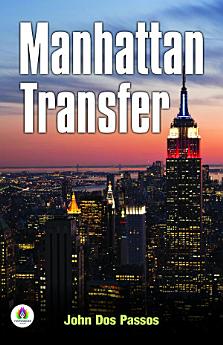Manhattan Transfer: John Dos Passos's Bestseller & Famous Book
About this ebook
The novel employs a unique narrative technique known as the "collage" style, which blends stream-of-consciousness, fragmented narratives, and a variety of voices to create a rich tapestry of urban life. Dos Passos presents a kaleidoscopic view of the city, focusing on the lives of diverse individuals—from ambitious professionals to struggling workers—revealing the contrasts and conflicts that define the metropolis.
Manhattan Transfer explores themes of ambition, disillusionment, and social change, reflecting the complexities of American society during the Roaring Twenties. The characters' personal struggles and societal interactions are depicted with keen observation and a modernist sensibility, providing readers with a deep understanding of the era's social and economic challenges.
Dos Passos’s innovative style and sharp social commentary make Manhattan Transfer a landmark in American literature. The novel’s portrayal of New York City as a microcosm of broader societal issues continues to resonate with readers, offering a compelling snapshot of an era marked by rapid change and cultural upheaval.







